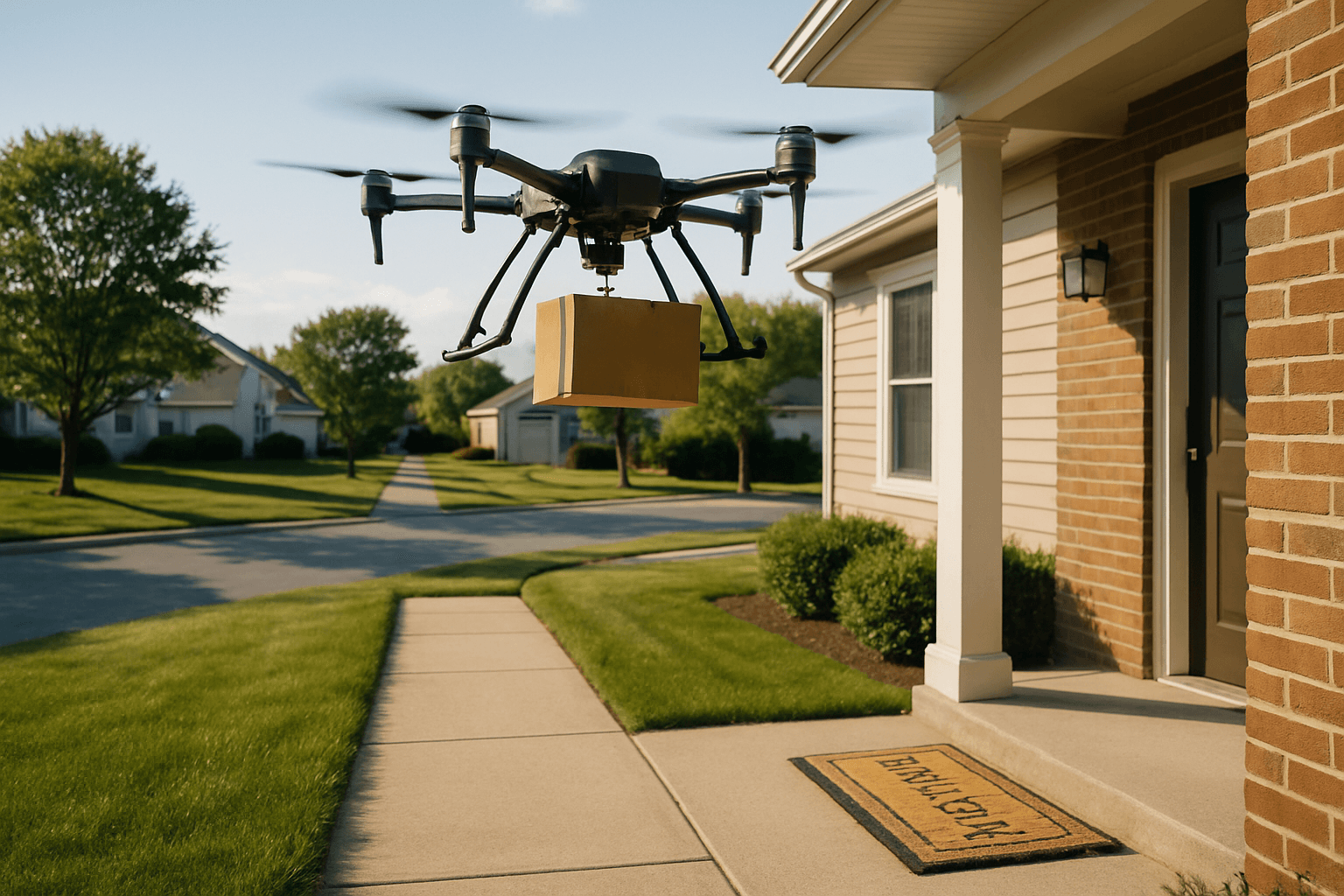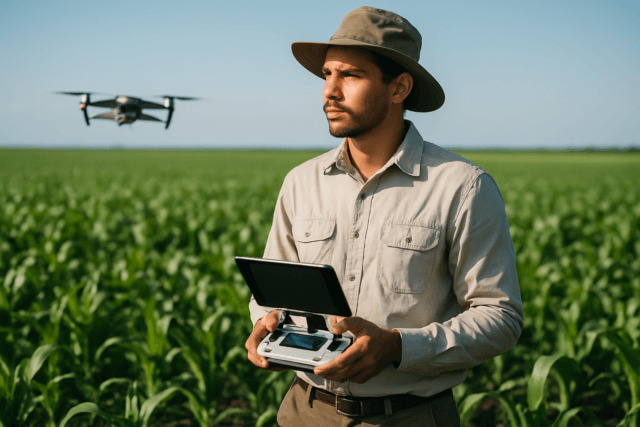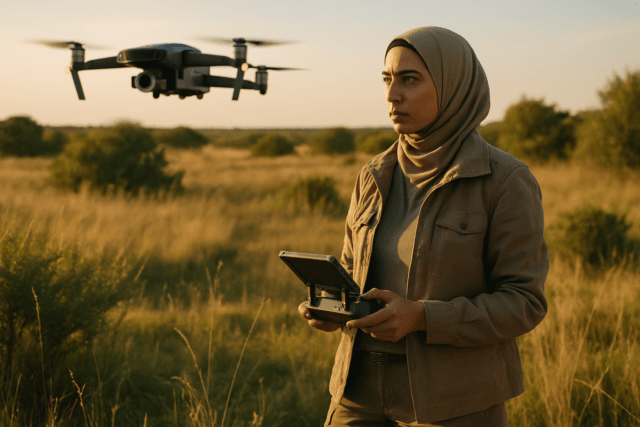The concept of a package arriving at one’s doorstep via an unmanned aerial vehicle (UAV) has swiftly transitioned from science fiction to a nascent, yet rapidly expanding, reality. Drone delivery services, leveraging advanced robotics and sophisticated navigation systems, are poised to revolutionize the final leg of the supply chain, commonly known as last-mile delivery. This paradigm shift addresses several inefficiencies inherent in traditional ground-based logistics, promising a future of faster, more cost-effective, and potentially more sustainable package distribution.
The Promise of Aerial Deliveries
Drone delivery offers a compelling array of benefits that underpin its growing appeal across various industries.
Speed and Efficiency
One of the most significant advantages of drone delivery is its unparalleled speed. Drones can bypass ground-level obstacles such as traffic congestion, road closures, and difficult terrain by taking direct, aerial routes. This capability allows for significantly reduced transit times, often delivering packages within minutes rather than hours. For instance, a drone can complete a delivery in 11 minutes that might take significantly longer by road, particularly in suburban areas. This speed is particularly critical for urgent shipments, including medical supplies, perishable goods, and emergency aid, where timely delivery can be life-saving. Companies like Zipline have demonstrated this by delivering medical supplies to remote areas, dramatically improving health supply chain resilience and vaccination coverage.
Cost Reduction
Beyond speed, drone delivery presents substantial opportunities for cost savings. Compared to traditional vehicle-based delivery services, operational costs for drones can be significantly lower, with some analysts estimating savings of 40% to 70%. This reduction stems from several factors: eliminating the need for human delivery drivers and their associated wages and benefits, reduced fuel consumption (especially for electric drones), and lower vehicle maintenance requirements compared to a large fleet of trucks. While initial investment in drone fleets and infrastructure can be high, the long-term operational efficiencies and scalability offer a strong return on investment.
Enhanced Accessibility
Drones excel at reaching locations that are challenging, dangerous, or even impossible for traditional ground vehicles. This includes remote or isolated communities, islands, and areas affected by natural disasters or poor infrastructure. By bridging these accessibility gaps, drones can deliver much-needed goods, medical supplies, and humanitarian aid to underserved regions, fostering greater inclusivity in delivery services.
Environmental Benefits
The environmental footprint of drone delivery is a subject of intense scrutiny, with promising results indicating its potential for sustainability. Electric-powered drones, in particular, can significantly reduce greenhouse gas emissions compared to fossil fuel-powered delivery vehicles. Studies by companies like Wing suggest a 90% reduction in carbon emissions per delivery mile, while Zipline claims a 98% reduction in delivery emissions compared to using cars for last-minute medical deliveries. Small drone delivery, on average, can result in about 0.42 kg of greenhouse gas emissions in California, representing a 54% savings from a truck delivery in that state. This aligns with global efforts to decarbonize transportation and move towards greener logistics. Furthermore, drones can alleviate road congestion, contributing to better air quality and reduced noise pollution in urban environments, though noise from drones themselves remains a concern.
Current Landscape and Key Applications
The drone delivery ecosystem is characterized by rapid innovation and strategic partnerships, with major players pushing the boundaries of what’s possible.
Diverse Use Cases
Drone delivery is finding applications across a wide spectrum of industries:
- E-commerce & Last-Mile Delivery: Giants like Amazon (Prime Air) and Walmart are integrating drones to fulfill the burgeoning demand for faster, same-day deliveries of parcels and groceries directly to consumers.
- Medical Supplies: This remains one of the most impactful applications, with drones delivering critical items like vaccines, blood samples, and medications to hospitals, clinics, and remote health facilities. Companies such as Zipline have pioneered this in countries like Rwanda and Ghana.
- Food Delivery: Services like Uber Eats are exploring drone integration to bring meals to customers more quickly, particularly in urban and suburban areas. Manna Drone Delivery, based in Ireland, transports food, coffee, and other items via drones.
- Disaster Relief: When conventional supply chains are disrupted, drones can rapidly deliver emergency supplies and humanitarian aid to disaster zones, minimizing risks to human personnel.
- Postal Services: Drones are being evaluated for streamlining the final portion of postal routes, especially in remote or difficult-to-access rural locations.
Leading Companies
The sector is dominated by a mix of established logistics firms, e-commerce behemoths, and specialized drone technology companies:
- Alphabet (Wing): A pioneer in the field, Wing has launched commercial delivery services in major U.S. metropolitan areas and partnered with companies like Walmart and DoorDash for various deliveries, including food, coffee, and pharmaceuticals.
- Amazon (Prime Air): Amazon has been at the forefront of drone delivery research and development since 2005, actively testing prototypes and working towards ultra-fast parcel deliveries.
- Zipline: Known for its humanitarian and medical delivery operations, particularly in Africa, Zipline has completed over a million drone deliveries for hospitals and major brands like Walmart.
- UPS (Flight Forward): UPS received certification to operate a drone service and has been granted permission for Beyond Visual Line of Sight (BVLOS) operations, furthering its goal of an established drone network.
- Walmart: Rather than developing its own drone fleet, Walmart has partnered with multiple drone delivery operators, including Flytrex, Zipline, DroneUp, and Wing, to serve customers in various regions.
- Other Key Players: Matternet, Wingcopter, DHL, and Manna Drone Delivery are also significant contributors to the evolving drone delivery landscape.
Navigating the Headwinds
Despite the promising outlook, drone delivery faces considerable hurdles that must be addressed for widespread adoption.
Regulatory Challenges
Perhaps the most significant barrier is the complex and evolving regulatory environment. Aviation authorities, such as the Federal Aviation Administration (FAA) in the U.S. and the European Union Aviation Safety Agency (EASA) in Europe, are working to establish comprehensive frameworks for commercial drone operations. Key challenges include:
- Beyond Visual Line of Sight (BVLOS): Current regulations often require drones to be operated within the visual line of sight of a remote pilot or observer. Achieving widespread, scalable drone delivery necessitates BVLOS operations, which requires advanced technological solutions and regulatory approvals. The FAA is reviewing rules (Part 108 and Section 2209) that could significantly open up BVLOS operations without individual waivers.
- Airspace Management: Integrating a large number of autonomous drones into existing air traffic management systems is a complex undertaking, requiring sophisticated technologies and new protocols to ensure safety.
- Certification and Operational Limitations: Operators need to obtain remote pilot certifications, register aircraft, and adhere to strict safety protocols, including pre-flight inspections and maintaining safe distances from people and property. Drones often have limitations on payload weight (e.g., typically under 5 kg, though some drones can carry up to 30 kg) and flight altitude.
Technological Limits
While rapidly advancing, drone technology still presents limitations:
- Battery Life and Flight Range: Most delivery drones have limited battery life, typically offering 20-40 minutes of flight time, which restricts their range to short distances from distribution centers. Innovations in battery technology, hydrogen fuel cells, and solar-powered drones are being explored to extend flight times.
- Payload Capacity: Drones are currently best suited for small, lightweight packages. Increasing payload capacity is essential for delivering a wider range of goods.
- Safety and Reliability: Ensuring drone safety, particularly in densely populated urban areas, is paramount. This requires advanced obstacle detection and avoidance technologies (e.g., LiDAR sensors, infrared cameras) to prevent collisions with other aircraft, birds, power lines, and buildings. The possibility of drones crashing in populated areas poses a significant risk to humans.
Environmental and Social Concerns
Beyond operational challenges, drone delivery faces environmental and public perception hurdles:
- Weather Conditions: Drones are vulnerable to harsh weather conditions such as high winds, heavy rain, extreme temperatures, and fog, which can affect stability, battery life, and flight accuracy, potentially leading to crashes.
- Wildlife Interference: Birds, particularly raptors, can perceive drones as threats and attack them, posing risks to both the drone and the wildlife.
- Noise Pollution: Frequent drone flights, especially in residential areas, can generate noise pollution, disrupting neighborhood quietness and potentially impacting residents’ well-being.
- Privacy Concerns: The integration of cameras and GPS technology in drones raises apprehensions about surveillance and data collection, with concerns about drones potentially taking photos or collecting personal information.
- Security Risks: Drones could be vulnerable to hacking or hijacking for malicious purposes, including theft or terrorism, necessitating robust cybersecurity measures.
- Public Acceptance: While public perception is improving, especially for medical deliveries and in rural areas, some people remain hesitant due to safety, privacy, and noise concerns. A “Not Over My Own Home” (NOMOH) phenomenon exists, where support for drone delivery is high, but not directly over one’s residence.
The Path Forward
Addressing these challenges is critical for the widespread integration of drone delivery into daily life. Continued investment in research and development is crucial for improving battery technology, enhancing payload capacity, and developing more sophisticated AI and machine learning capabilities for autonomous flight and navigation. Advanced sensors for obstacle detection and weather prediction systems will further enhance safety and reliability.
On the regulatory front, the ongoing review of BVLOS rules and the establishment of clear, consistent air traffic management systems are paramount. Collaboration between regulators, industry players, and communities will be essential to develop a framework that balances innovation with safety, privacy, and environmental considerations. This includes defining drone flight zones and logistics hubs, particularly in urban areas.
As technology matures and regulatory frameworks evolve, drone delivery is expected to become an increasingly common sight. Analysts predict significant growth in the global drone package delivery market, reaching USD 8 billion by 2027 and potentially serving approximately 67% of the global population, particularly suburban and rural residents, by 2034. This expansion will not only transform logistics but also foster new business models, enhance customer satisfaction, and drive profitability by opening up new markets where traditional delivery methods struggle.
The future envisions a more connected and efficient delivery network where drones complement traditional methods, offering a flexible, rapid, and sustainable alternative for a wide array of goods. From urgent medical supplies to everyday groceries, drones are set to redefine convenience and accessibility, marking a new era in package transportation.





